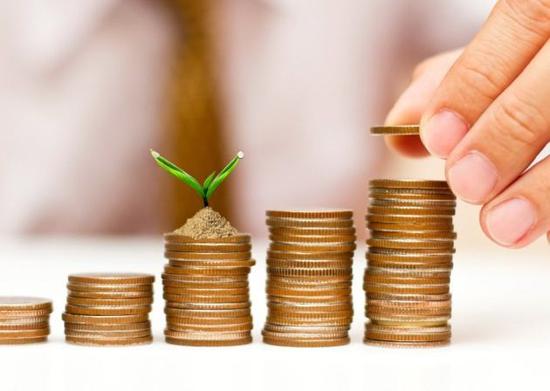文/新浪财经意见领袖专栏机构 罗汉堂

大流行病很少对所有人群产生同样的影响。14世纪爆发的黑死病导致全球人口减少3分之一,然而最贫困人口产生的死亡数量却最多。中世纪欧洲,农民营养不良、过度劳动且密集居住,成为鼠疫爆发的温床。几个世纪后的今天,全球GDP已经达到了100万亿美元,我们有足够的资源来遏制另一场全球大流行病吗?目前证据显示,答案并不乐观。
尽管还存在不确定性,各个国家政策反应有效性各不相同,但预测显示COVID19将让世界损失超过10万亿美元以上。而世界经济每损失一个百分点,全球就会有1000万以上人口陷入贫困之中。鉴于最贫困人群更易罹患慢性疾病,他们将面对COVID19引起更高死亡率的风险。这场大流行病已经引发经济危机,失业率将随之飙升,社会福利系统更加脆弱,从而让人民健康和社会安全面临更大威胁。
养家糊口不应以个人健康和公共健康为代价。在美国,很多没有保险的人感染病毒,无力支付意料之外的高额医疗账单。还有病毒携带者因害怕失业而继续工作。尽管在美国和英国等高收入国家,已经有失业保障相关的立法, 但低收入群体一直以来难以从复杂的福利系统中获益,担忧这些保险无法解决燃眉之急。此外大量的劳动者,包括那些自雇者都不在这些保险措施的覆盖。在那些存在大量极度贫困人群的国家,例如印度,低收入人群缺乏金融保障而产生恶果更是比比皆是。
在之前的疫情爆发中,例如中东呼吸综合征(MERS),医护人员常常由于缺乏测试和个人保护装备而成为病毒的感染者。历史在重演,在西班牙和意大利,新冠疫情确诊人数中超过10分之一是医护人员。预测显示,到2030年全球医护人员的缺口将达到1500万之多,政府却将这些宝贵的人才置于危险境地。
贫困人口在正常情况下都缺乏医疗服务,疫情更让他们成为最脆弱的群体。此外,由于缺乏信息获取渠道,假信息和通讯不良让他们经常无视政府的健康警告。由于政府引入社交隔离政策,普及家庭互联网连接已刻不容缓。
全球对COVID19应对不力已显而易见。贫困人口和富裕人口之间的预期寿命和死亡率差距达到了历史最高水平。尽管本次疫情还远未达到顶峰,但我们已经看到病毒在一些最脆弱的环境下传播例如战乱地带、监狱和难民营。疫情让全球经济更深地陷入危机之中,各国的经济经济救助计划、资源和资金分配计划尤其要帮助那些贫困人口,减少不平等现象,避免社会不公的“疫情“伺机传播。
诺奖得主斯蒂格里茨和皮萨里得斯近期在《柳叶刀》撰文,警告收入差距将让疫情在贫困群体中传播得更快。
英文原文:
Pandemics rarely affect all people in a uniform way.The Black Death in the 14th century reduced the global population by a third, with the highest number of deaths observed among the poorest populations.1Densely populated with malnourished and overworked peasants, medieval Europe was a fertile breeding ground for the bubonic plague. Seven centuries on—with a global gross domestic product of almost US$100 trillion—is our world adequately resourced to prevent another pandemic?2 Current evidence from the coronavirus disease 2019 (COVID-19) pandemic would suggest otherwise.
Estimates indicate that COVID-19 could cost theworld more than $10 trillion,3 although considerable uncertainty exists with regard to the reach of the virus and the efficacy of the policy response. For each percentage point reduction in the global economy, more than 10 million people are plunged into poverty worldwide.3 Considering that the poorest populations are more likely to have chronic conditions, this puts them at higher risk of COVID-19-associated mortality.
Since the pandemic has perpetuated an economic crisis, unemployment rates will rise substantially and weakened welfare safety nets further threaten health and social insecurity.
Working should never come at the expense of an individual’s health nor to public health. In the USA, instances of unexpected medical billings for uninsured patients treated for COVID-19 and carriers continuing to work for fear of redundancy have already been documented.4 Despite employment safeguards recently being passed into law in some high-income countries, such as the UK and the USA, low-income groups are wary of these assurances since they have experience of long-standing difficulties navigating complex benefits systems,4 and many workers (including the self-employed) can be omitted from such contingency plans. The implications of inadequate financial protections for lowwage workers are more evident in countries with higher levels of extreme poverty, such as India.
In recent pandemics, such as the Middle East respiratory syndrome, doctors were vectors of disease transmission due to inadequate testing and personal protective equipment.5 History seems to be repeating itself, with clinicians comprising more than a tenth of all COVID-19 cases in Spain and Italy. With a projected global shortage of 15 million health-care workers by 2030, governments have left essential personnel exposed in this time of need.
Poor populations lacking access to health services in normal circumstances are left most vulnerable during times of crisis. Misinformation and miscommunication disproportionally affect individuals with less access to information channels, who are thus more likely to ignore government health warnings.6 With the introduction of physical distancing measures, household internet coverage should be made ubiquitous.
The inequitable response to COVID-19 is already evident. Healthy life expectancy and mortality rates have historically been markedly disproportionate between the richest and poorest populations. The full effects of COVID-19 are yet to be seen, while the disease begins to spread across the most fragile settings, including conflict zones, prisons, and refugee camps. As the global economy plunges deeper into an economic crisis and government bailout programmes continue to prioritise industry, scarce resources and funding allocation decisions must aim to reduce inequities rather than exacerbate them.
(本文作者介绍:罗汉堂于2018年6月26日在杭州成立,是由阿里巴巴倡议,并由社会科学领域全球顶尖学者共同发起的开放型研究机构。罗汉堂首批学术委员会委员以经济学家为主,包括6位诺贝尔经济学奖得主。罗汉堂将携手更多的全球社会科学家和实践者,研究数字技术对经济和社会的影响,深刻理解并主动参与这一变革。罗汉堂的研究服务全社会,应对最重要的全球挑战,并着眼于人类社会的长期发展。)
责任编辑:潘翘楚
新浪财经意见领袖专栏文章均为作者个人观点,不代表新浪财经的立场和观点。
欢迎关注官方微信“意见领袖”,阅读更多精彩文章。点击微信界面右上角的+号,选择“添加朋友”,输入意见领袖的微信号“kopleader”即可,也可以扫描下方二维码添加关注。意见领袖将为您提供财经专业领域的专业分析。
